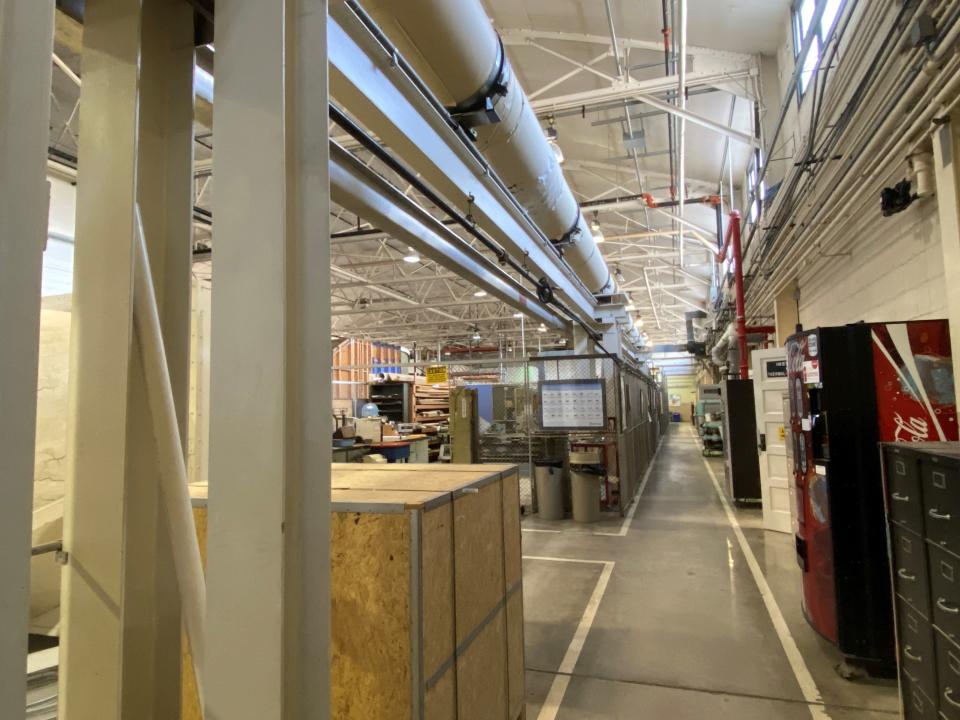Hypersonics' importance: nationwide and at Purdue
WEST LAFAYETTE, Ind. − The field of hypersonics is booming at Purdue, and the Journal & Courier sat down with Professor of aeronautics and astronautics, Steven Schneider, to discuss its future.
What is the field of hypersonics?
Dr. Schneider works in specific areas of the hypersonic field, those being hypersonic and supersonic laminar-turbulent transition and low-disturbance wind tunnels and associated instrumentation.

"You go from smooth laminar flow to unsteady, jumbling, turbulent flow," Schneider said. "You work on how you go from one to the other."
Schneider described the field of hypersonics as, "Things that go really fast, faster than five times the speed of sounds." Specifically, aircraft and missiles that fly that speed.
National and local importance of hypersonics
The ability for an aircraft to hit hypersonic speed is highly important for areas such as space travel, rapid military responses at long range and faster methods of commercial air travel.
The United States' uses of hypersonic air travel primarily comes in the form of military hypersonic missiles, specifically boost-glide missiles and cruise missiles.
According to the article, "Hyper Portfolio" by Steven Trimble, the goal of the U.S. Defense Department's $2 billion campaign to expand production and test infrastructure for hypersonic weapons is to significantly reduce the time and cost it takes for the development and production timelines.
"If you fly things really fast, you get to a target faster and get passed defenses more easily," Schneider said. "For us and the other guys. So, it's important for those reasons."
Purdue has played and continues to play an important role in hypersonic development, as explained by Schneider.

"Well (Purdue) is a place where some of us have been doing some work for a long time where we can both contribute to the national defense and students can contribute to the national defense, and do some interesting engineering science work. Perhaps we have the advantage with respect to our competitor schools around the country."
Purdue Hypersonics is made up of a multidisciplinary team of hypersonic research experts. Areas of research include guidance, navigation and control; system engineering, integration, command and control; aerodynamics/aerothermal effects; sensors and atmospheric effects and many more.
Purdue also has a variety of hypersonics facilities, including the Boeing/AFOSR Mach 6 Quiet Tunnel, Maurice J. Zucrow Laboratories, Advanced Computational Materials and Experimental Evaluation (ACME) Laboratory, and multiple others.
The work on hypersonics at Purdue goes towards the overall improvement of national security.
"I've been doing this hypersonic laminar-turbulent transition problem," Schneider said, regarding his work in the field at Purdue, "There's some people that have been doing materials, some have been doing propulsion systems."
Schneider elaborated on why Purdue's presence in hypersonics is above average compared to other universities.
"Some of it's because some of us kept doing it when other places stopped," Schneider said. "Some of it's because Purdue is willing to do stuff that's not public release. A lot of defense work isn't public release. Some other schools will very strictly not do anything with any publication restrictions. Purdue has been willing to accept publication restrictions and citizenship requirements of students..."
The future of hypersonics at Purdue
Schneider reflected on what he looks forward to seeing developed in the field of hypersonics, especially at Purdue University.
"Well we're building this new building down the road, hypersonic and applied research facilities," Schneider said. "...There's two wind tunnels that are supposed to go in that building...We're hoping we can make those successful."
This new facility consists of a 64,600 gross square-feet research lab for HYPULSE and Mach 8 wind tunnels. The $41 million project is expected to have an occupancy date of April 2023.
Margaret Christopherson is a reporter for the Journal & Courier. Email her at mchristopherson@jconline.com and follow her on Twitter @MargaretJC2.
This article originally appeared on Lafayette Journal & Courier: Contributing to national defense: Hypersonics nationwide and at Purdue

